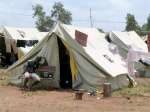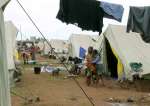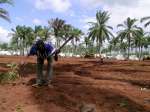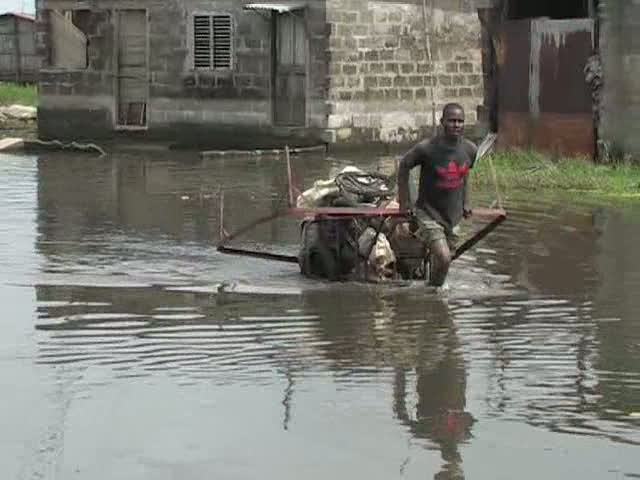Benin closes Come camp for Togolese refugees
News Stories, 18 August 2006
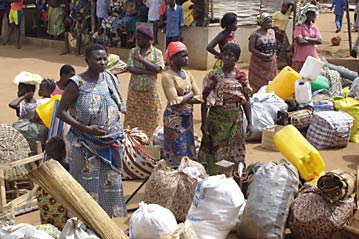
COTONOU, Benin, August 18 (UNHCR) – The West African nation of Benin has closed a camp set up last year to shelter refugees from post-electoral violence in neighbouring Togo. Convoys last week moved the last 493 refugees from Come Camp to the settlement of Agame, close to the border with Togo.
"The number of Togolese refugees in Benin has fallen considerably in recent months with spontaneous departures reported every day. Agame is big enough to take all the refugees in Come camp," explained Marie-Rose Mpendubundi, who heads the UNHCR field office at Lokossa.
The move, which was carried out from August 9-11, will allow the refugee agency and its partners to consolidate protection activities and refugee assistance in a single location.
At Come, 70 kilometres south-west of the coastal city of Cotonou, workmen have been dismantling infrastructure and cleaning the site – which was a youth centre and playground before the refugees arrived. The facility, which held 1,700 refugees at its peak, will be handed over to the local authorities.
With its closure, Agame – home to almost 6,000 refugees before last week's arrivals – is now the only camp in the country housing Togolese. An estimated 3,000 of the displaced from Togo live with relatives or host families in and around Cotonou.
The two camps opened after tens of thousands of Togolese escaped their country when violence erupted after the April 26, 2005 presidential election, which brought Faure Gnassingbé to power. More than 25,000 went to Benin, and some 15,000 to Ghana. The government has since asked people to return home.
UNHCR teams had been preparing for the move and sensitising refugees at Come for several weeks. Refugee representatives were taken to Agame to met counterparts there and discuss the move.
While some were worried about the friction that erupted in Agame last February, most of the newcomers were more worried about the camp's isolation. "At Come, I was able to sell maize in the town market, which was near the camp. At Agame, the market is much smaller and the women there will not let us sell what we want," said Sylvie, who fled to Benin last year with her two children and was on the first convoy to leave Come on August 9.
Another refugee, Kofi, taught at the camp school in Come, but feared that he might not be able to continue teaching at Agame. "I am not happy to leave Come, but I had no choice," he said, while waiting for the convoy to leave.
On arrival at Agame, the refugees each received a ration card before taking their belongings to a special tent pitched for them. They will receive food supplies each month and will have access to water as well as health and education facilities. But plans are afoot to move refugee children to local schools at the beginning of the next academic year. UNHCR will help by building new classrooms, while a market will soon be built in the district.
The refugees at Agame can also grow vegetables and practice aquaculture on land provided by the local authorities. They can also take part in literacy courses, youth activities, and cleaning and beautification of the camp site – all organized by the refugees themselves.
In Togo, welcome committees comprising representatives of civil society, political parties and the government have been set up in areas where the refugees originally came from. They have been tasked with easing the return of the refugees, including assuring them of their human rights. UNHCR has strengthened its presence in the country.
By Julie Leduc in Cotonou, Benin









